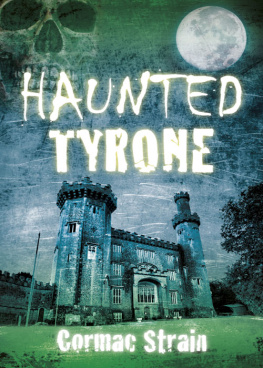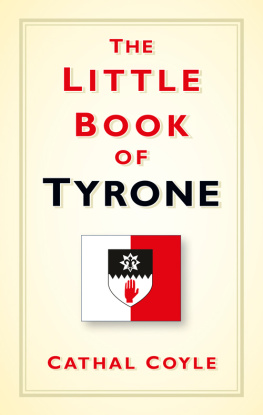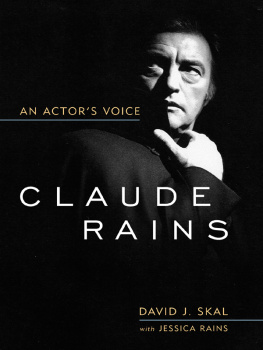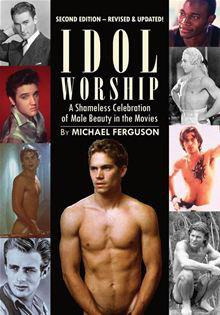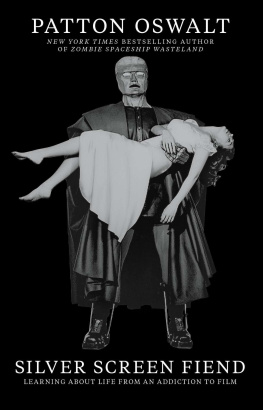
TYRONE POWER
ALSO BY FRED LAWRENCE GUILES:
Stan: The Life of Stan Laurel
Marion Davies: Hanging on in Paradise
Norma Jean: The Life of Marilyn Monroe
Jane Fonda: The Actress in Her Time
Joan Crawford: The Last Word
TYRONE POWER
The Last Idol
FRED LAWRENCE GUILES

Turner Publishing Company
Nashville, Tennessee
www.turnerpublishing.com
Copyright 1979, 1990, 2020 by Fred Lawrence Guiles.
Manufactured in the United States of America
No part of this publication may be reproduced, stored in a retrieval system, or transmitted in any form or by any means, electronic, mechanical, photocopying, recording, scanning, or otherwise, except as permitted under Sections 107 or 108 of the 1976 United States Copyright Act, without either the prior written permission of the Publisher, or authorization through payment of the appropriate per-copy fee to the Copyright Clearance Center, 222 Rosewood Drive, Danvers, MA 01923, (978) 750-8400, fax (978) 750-4744. Requests to the Publisher for permission should be addressed to Turner Publishing Company, 4507 Charlotte Avenue, Suite 100, Nashville, Tennessee, (615) 255-2665, fax (615) 255-5081, E-mail: .
Limit of Liability/Disclaimer of Warranty: While the publisher and the author have used their best efforts in preparing this book, they make no representations or warranties with respect to the accuracy or completeness of the contents of this book and specifically disclaim any implied warranties of merchantability or fitness for a particular purpose. No warranty may be created or extended by sales representatives or written sales materials. The advice and strategies contained herein may not be suitable for your situation. You should consult with a professional where appropriate. Neither the publisher nor the author shall be liable for any loss of profit or any other commercial damages, including but not limited to special, incidental, consequential, or other damages.
Cover design: Lauren Peters-Collaer
Book design: Mallory Perkins
Library of Congress Cataloging-in-Publication Data
Guiles, Fred Lawrence.
Tyrone Power : the last idol / by Fred Lawrence Guiles.
p. cm. (Lively arts)
Reprint. Originally published: Garden City, N.Y : Doubleday, 1979 Includes bibliographical references. Power, Tyrone, 191458. 2. Motion picture actors and actresses-Biography. I. Title. II. Series.
PN2287.
P62G81990
791.43028092dc20 [B]
United States
90-5857 CIP
For Laura Ross,
who has kept a light in her window
for this wandering writer,
and for Larry and Jane.
CONTENTS
AN ACKNOWLEDGMENT
T yrone Power was as versatile in life as he was on the screen. He was several men, and during the creation of this book I have been fortunate in having the other principal lead in each of these lives as an active partner, coming very close at times to the point of collaboration.
His only sister, Anne Power Hardenbergh, has devoted an extraordinary amount of her time, love, and vitality to seeing that Tyrone as a family man, his closeness to his mother and herself, as well as his unwavering respect for their father have been accurately detailed. In an industry where fidelity is considered something of an oddityand in Tyrone, however briefly, a bit of a miraclehis memory as a lover and husband has been well served by the one woman who understood not only the man but the nature of the enemy that seemed dedicated to destroying their devotion to each otherAnnabella Power. As for Tyrones role as a complex, but always loyal, companion, his closest friend, J. Watson Webb, Jr., has followed this project from its inception with help at every turn, and, in the end, I think, with relief and satisfaction that something of the truth has been caught here.
I want to thank Joshua Logan and Rupert Allan once again for their many kindnesses and for opening significant doors; Tyrones directors, Henry King, Allan Dwan, Henry Hathaway, and George Sidney, for giving me important background on his work and particular films; George Chasin, Anne Baxter Klee, and Henry Fonda for adding their keen perceptions of the man to this work; and to the following for helping in various ways to bring this portrait to life: Deborah Lawrence, the Marquisa Helena Quintanar, Linda Christian, Taryn Power, Romina Power Carrisi, Leora Dana, Mary Roblee, Robert Webb, Bobby McLean Webb, Mary Loos, Ray Sebastian, Andr Daven, Maya Van Horn, Sra. Blanca Welter Alvarez, Robert J. Allen, Michael Steckler, Henry Edw. Lea, Eva Gabor, Cesar Romero, Gertrude Macy, Mrs. Virginia Zanuck, Madelyn Jones, Lothar Wolff, Mrs. Jack ORourke, Mrs. Lilian Ruddy, Paul Gregory, and Glenn Ford.
The Library of the Academy of Motion Picture Arts and Sciences has supplied much of the documentary material, without which Tyrones times could not have been recreated; their staff has my most profound gratitude. Mrs. Felizia Seyd is responsible for much of the text in the Filmography and my thanks to her for her diligence; Mrs. Ursula Fox is due thanks for copying many of the documents and clippings used by the author; and my gratitude goes once more to Carlos MacMaster for being helpful in so many ways. I am indebted, too, to the staffs of the American Film Institute in Beverly Hills, the Billy Rose Collection at the Lincoln Center Branch of the New York Public Library, Paul Myers, Curator, and the script collection of the Library of the University of California, Los Angeles.
Lancaster County, Pennsylvania | Fred Lawrence Guiles |
1979 |
The secret of charm is bull-shit
Tyrone Power to friend
Mike Steckler
INTRODUCTION
T here are no more idols. No Maurice Costellos. No Valentinos. No Tyrone Powers. Our great male stars today must be of very human clay with the flaws played up instead of down, preferably a mole or two or a pronounced squint, perhaps both; comfortable to sit down with as they chat on a television show; certainly no serious threat to our romantic lives.
The last idol, Tyrone Power, was created by a vast star-making machine, Twentieth Century-Fox. The star machine was corrupt, but it served to make Hollywood known to the most remote reaches of the earth. The process was dehumanizing, both to the star and to audiences. For a very long time, throughout the great studio period, movies had few admirers for their sake alone. The film language of Griffith or the pathos of Chaplin was seldom discussed. People spoke instead of the grandeur of Pickfair, the Fairbanks-Pickford residence so often shown in Sunday roto sections; the terrible overdose death of handsome Wallace Reid, the sudden death of Valentino, the near-ritualized death of Jean Harlow; Shirley Temples dramatic powersthe little Duse; the size of Garbos feet and the quality of her plumbing (gold faucets were the much-photographed pride of her rented mansion, a gift from John Gilbert). Shopgirls shed their own identities for something close to Rita Hayworths or Joan Crawfords. They wrote tons of fan mail and it was answered in due course by corps of secretaries, usually accompanied by autographed photos.
The star machine was at the heart of the studio system. It bore a considerable resemblance to racehorse breeding. The fillies and stallions were carefully groomed for the big race. It is not surprising that many studio heads, Darryl F. Zanuck and Louis B. Mayer among them, acquired stables of fine horseflesh, Zanuck for polo, which was his other passion, and Mayer for racing, which was his.
Next page


